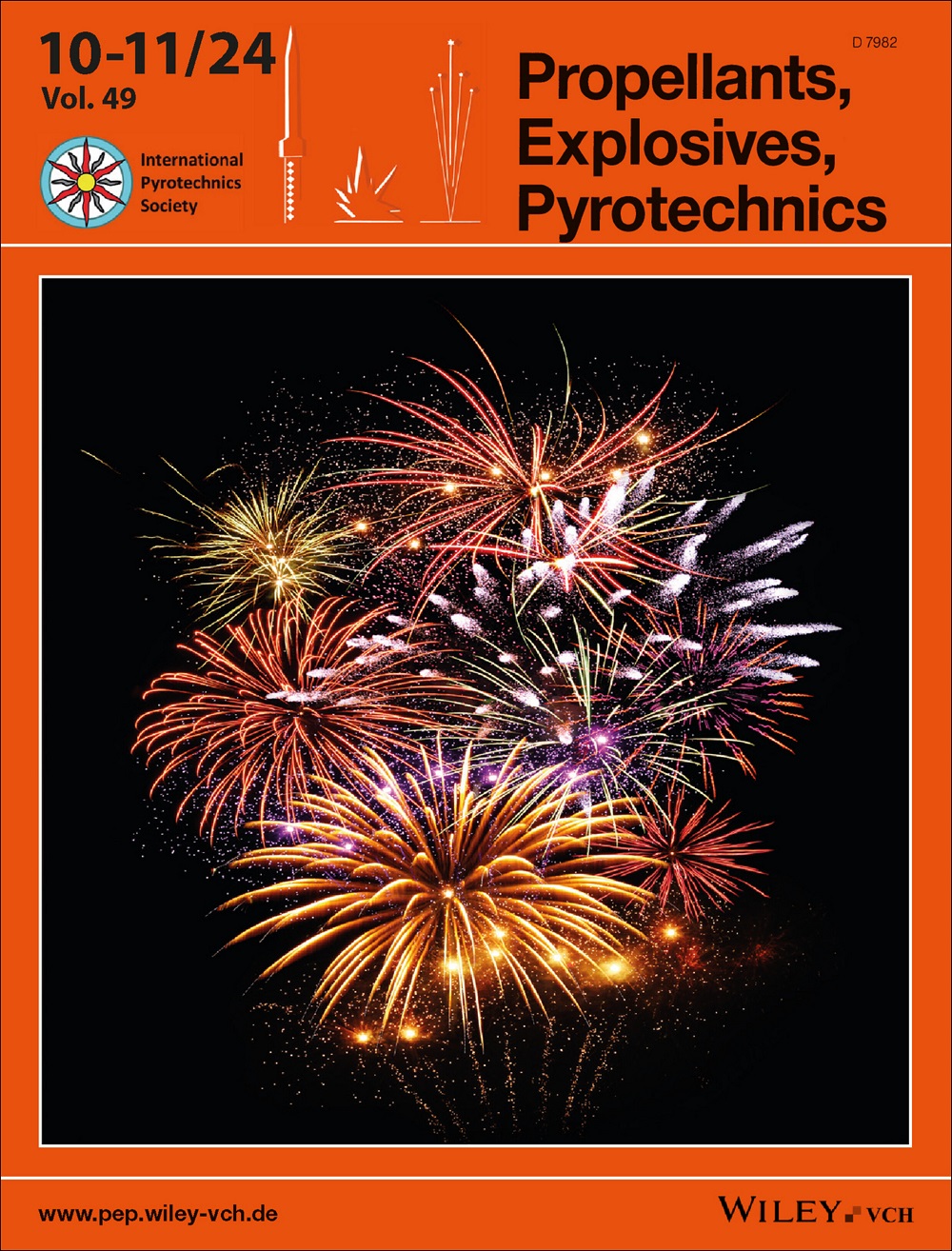聚合物粘结炸药在低速冲击下的动态破坏和非冲击点火行为
IF 2
4区 工程技术
Q3 CHEMISTRY, APPLIED
引用次数: 0
摘要
由热点引起的聚合物粘结炸药(PBX)意外点燃一直是国内外研究的重点。微裂纹摩擦在热点形成过程中起着至关重要的作用。本研究进行了密闭试验,以研究 PBX 在冲击加载下的点火响应。实验结果表明,在脉冲宽度为 50 μs、振幅为 638 MPa 的压力加载条件下,PBX 发生了点火。粘弹性统计开裂模型(Visco-SCRAM)和热点点火模型被用来描述 PBX 的损伤行为和点火响应。模拟结果表明,在约束冲击条件下,冲击面中心及其附近发生了更严重的损坏,这与试验后观察到的样品一致。此外,模拟结果还预测 PBX 内严重受损区域的形状为梯形。这项研究的结果为理解 PBX 在冲击载荷下的损坏行为和临界点火提供了启示。本文章由计算机程序翻译,如有差异,请以英文原文为准。
Dynamic damage and non‐shock ignition behavior of polymer bonded explosive under lower velocity impact
The accidental ignition of polymer‐bonded explosives (PBXs) caused by hot spots has been the focus of domestic and international research. Micro‐crack friction plays a crucial role in the formation these hot spots. In this study, confined tests were conducted to investigate the ignition response of PBX under impact loading. The experimental results revealed that the PBX underwent ignition under the given conditions of a pressure load with a pulse width of 50 μs and an amplitude of 638 MPa. The viscoelastic statistical cracking model (Visco‐SCRAM) and hot‐spot ignition model were used to describe the damage behaviors and ignition responses of the PBX. The simulation results revealed that more severe damage occurs at the center of the impact face and its vicinity under confined impact conditions, which is consistent with the observed post‐test samples. Additionally, simulation results also predict a trapezoidal shape for the severely damaged region within the PBX. The findings of this study provide insights for understanding the damage behavior and the critical ignition of PBX under impact loading.
求助全文
通过发布文献求助,成功后即可免费获取论文全文。
去求助
来源期刊

Propellants, Explosives, Pyrotechnics
工程技术-工程:化工
CiteScore
4.20
自引率
16.70%
发文量
235
审稿时长
2.7 months
期刊介绍:
Propellants, Explosives, Pyrotechnics (PEP) is an international, peer-reviewed journal containing Full Papers, Short Communications, critical Reviews, as well as details of forthcoming meetings and book reviews concerned with the research, development and production in relation to propellants, explosives, and pyrotechnics for all applications. Being the official journal of the International Pyrotechnics Society, PEP is a vital medium and the state-of-the-art forum for the exchange of science and technology in energetic materials. PEP is published 12 times a year.
PEP is devoted to advancing the science, technology and engineering elements in the storage and manipulation of chemical energy, specifically in propellants, explosives and pyrotechnics. Articles should provide scientific context, articulate impact, and be generally applicable to the energetic materials and wider scientific community. PEP is not a defense journal and does not feature the weaponization of materials and related systems or include information that would aid in the development or utilization of improvised explosive systems, e.g., synthesis routes to terrorist explosives.
 求助内容:
求助内容: 应助结果提醒方式:
应助结果提醒方式:


